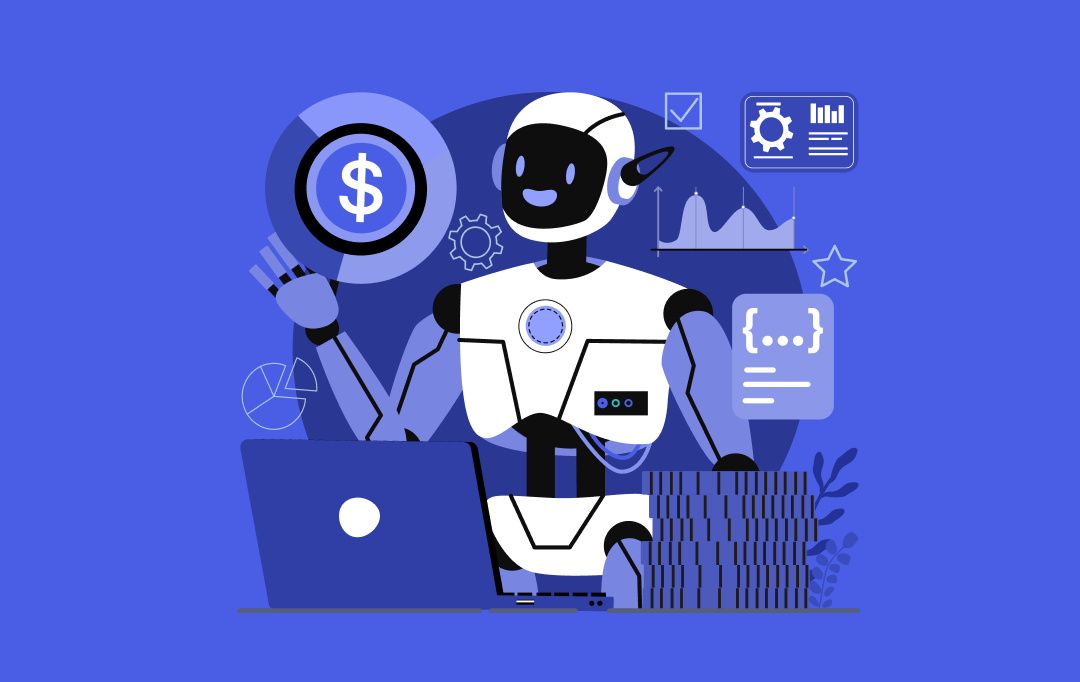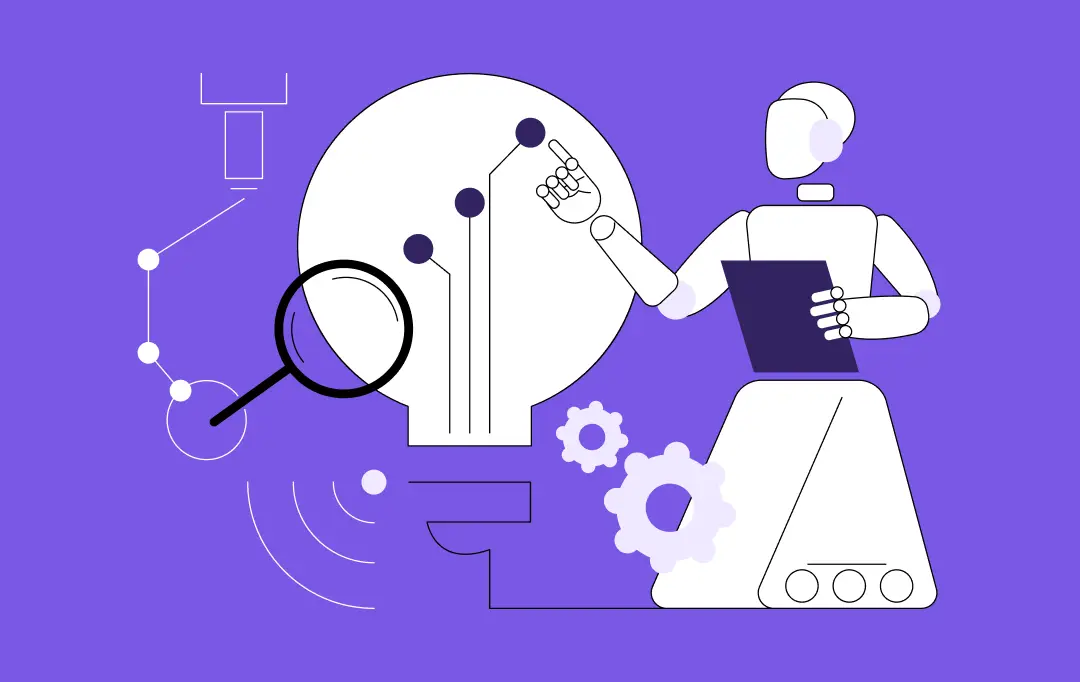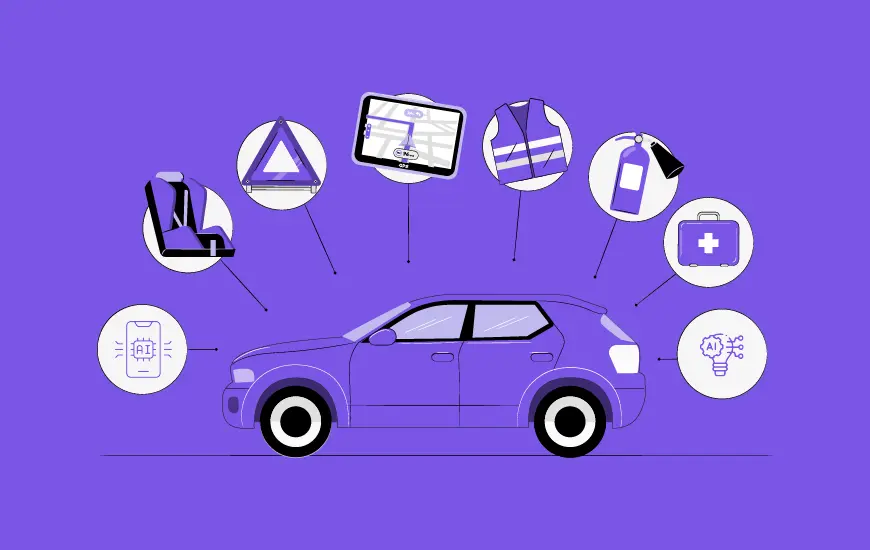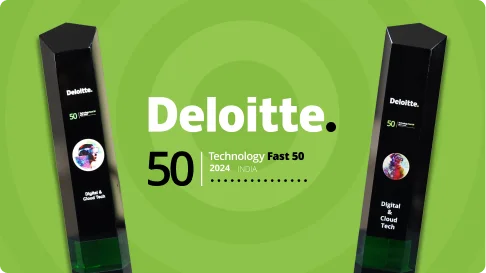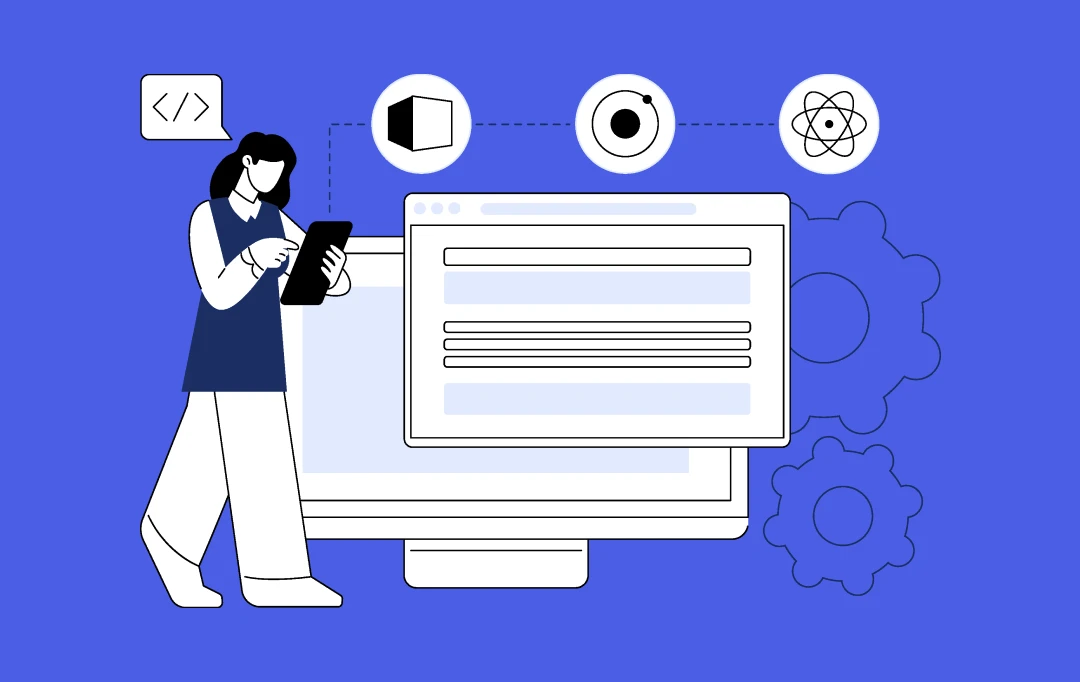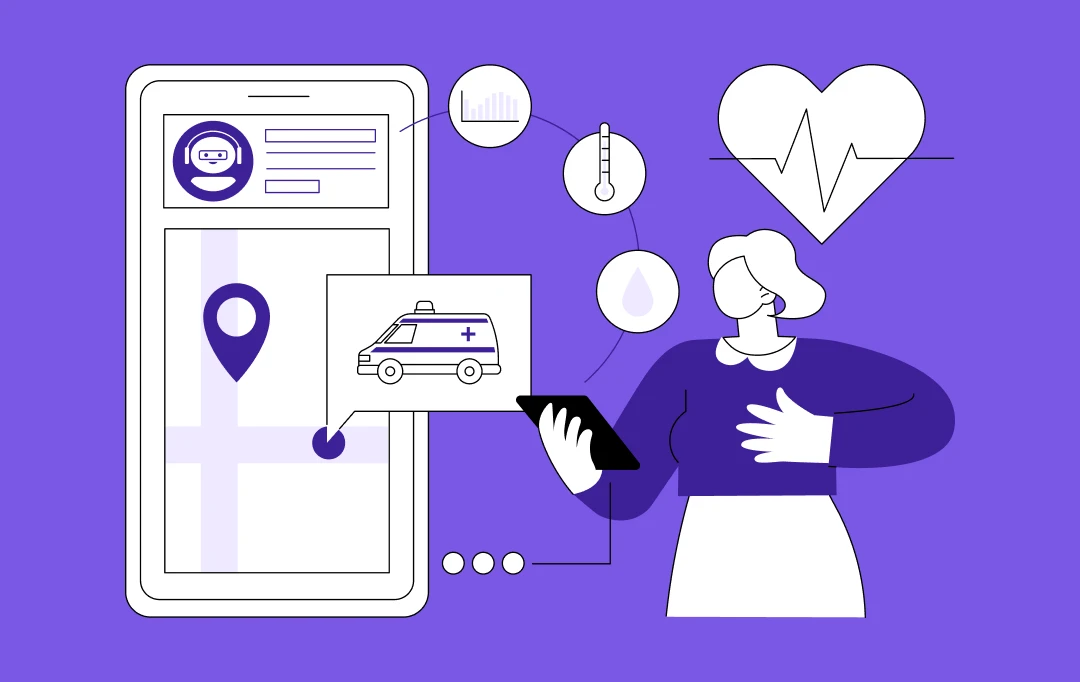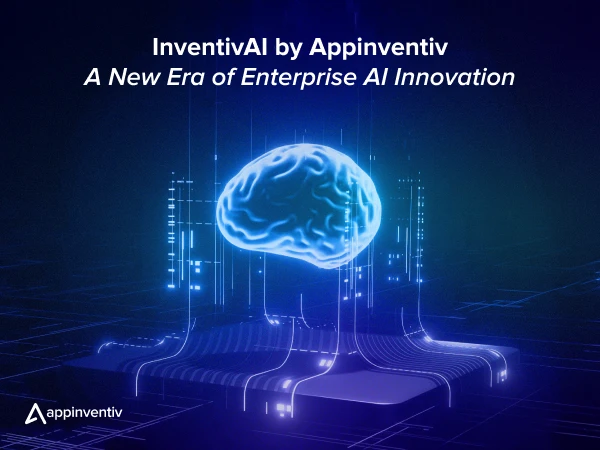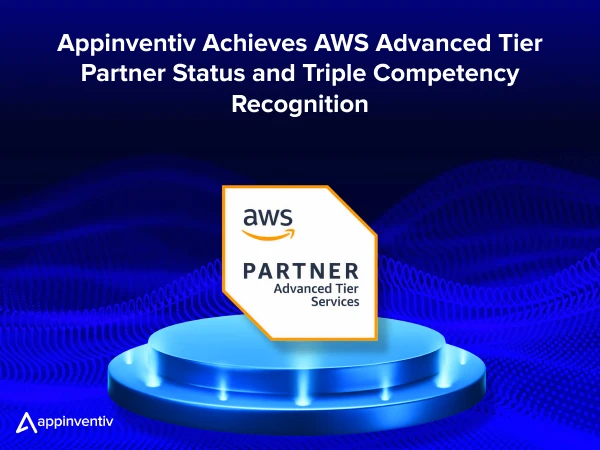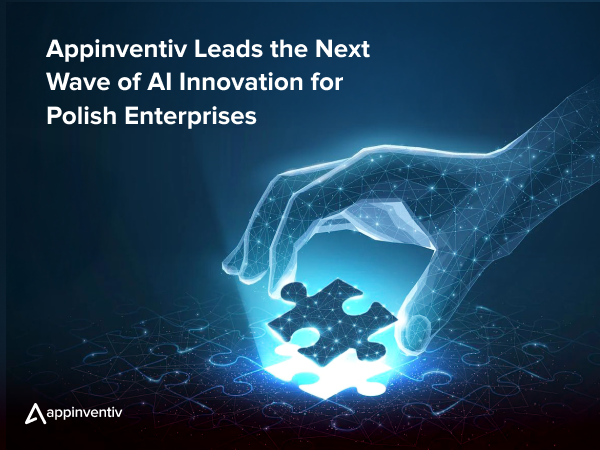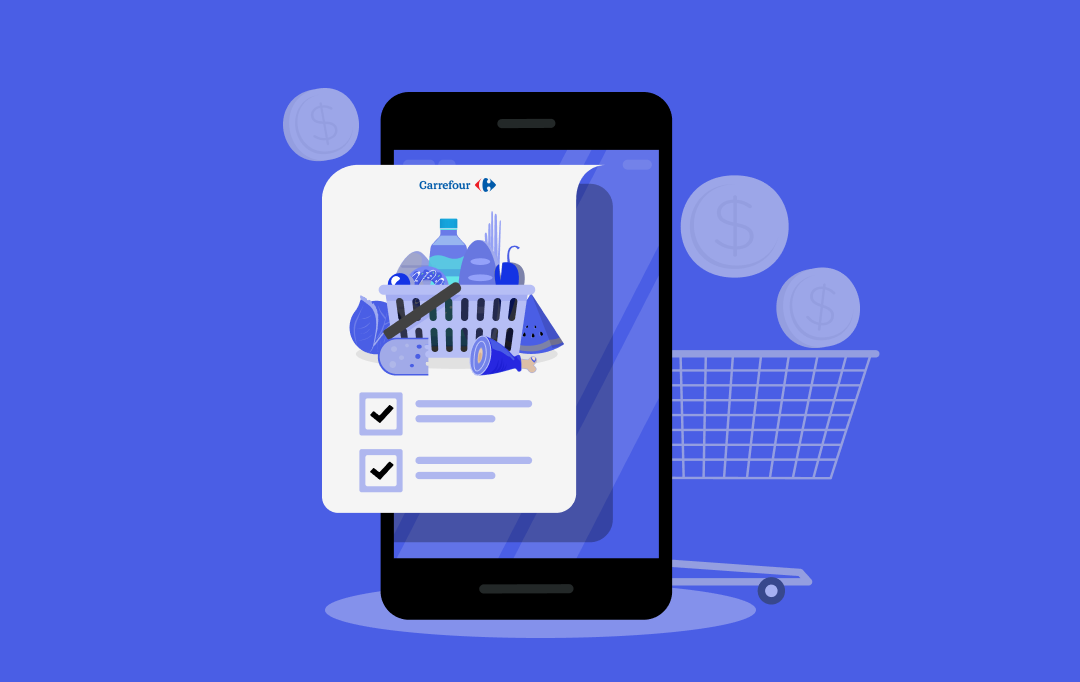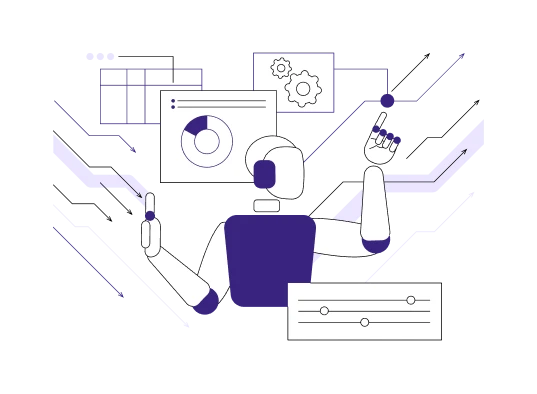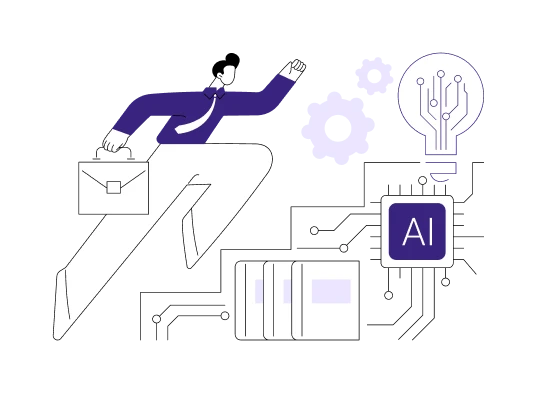- AI Market Statistics and Adoption Trend in Businesses
- Emerging AI Trends Shaping the Today & Tomorrow of the Modern Business World
- Conversational AI
- Predictive Analytics
- AI Democratization (Low-code/No-code)
- Ethical and Explainable AI
- Multi-Modal AI
- Digital Twins
- Collaboration of Humans and Robots (CoBots)
- Generative AI
- Shadow AI
- Retrieval-Augmented Generation (RAG)
- Sentimental AI
- Quantum AI
- Agentic AI
- Physical and Embodied AI
- Sovereign AI and Geopolitical Dynamics
- Responsible AI
- AI Governance
- Power of AI Industry Trends When Combined with Other Emerging Technologies
- AI + Internet of Things (IoT)
- AI + Blockchain
- AI + Augmented Reality
- AI + Edge Computing
- AI + 5G
- Enterprise AI Trends and Their Applications in Different Sectors
- AI in Healthcare
- AI in Gaming
- AI in Retail/ eCommerce
- AI in Transportation
- AI in Manufacturing
- AI in Finance
- AI in Agriculture
- AI in Education
- AI in Entertainment
- AI in Construction
- AI in Cybersecurity
- What Are the Future Trends in Artificial Intelligence?
- 1. AI Becomes Ubiquitous and Integrated
- 2. Surge in AI Investment Trends
- 3. Advancements in AI Reasoning
- 5. Focus on AI Safety and Ethics
- Keep Pace with the Latest AI Trends with Appinventiv
- FAQs
- Q. What are the current trends in AI?
- Q. What are the major AI developments and announcements from today across the tech industry?
- Q. What emerging trends in AI search should businesses prepare for?
- Q. What are the latest advancements in AI for analytics and data-driven decision making?
- Q. How is ChatGPT and generative AI evolving for future industry applications?
- Q. How does Appinventiv leverage AI trends for business growth?
Key takeaways:
- 78% of organizations now use AI in at least one business function. This shows the growing dominance of AI trends.
- AI technologies like Conversational AI, Agentic AI, Multi-Modal AI, etc. are redefining business in different sectors.
- With key AI trends like predictive analytics, businesses can make smarter, faster and data-driven decisions.
- With 300+ AI-powered solutions delivered with 98% model accuracy, and recognized by Deloitte as FastTech 50, Appinventiv is your trusted AI partner.
“Artificial intelligence doesn’t just automate tasks; it reinvents business.” Don’t believe us? Well, consider these compelling stats that present a stark reality.
- By 2024, 78 % of organizations reported using AI in at least one business function, up from 55 % in the prior year.
- Private investment in generative AI alone hit $33.9 billion in 2024, reflecting its growing prominence.
- According to McKinsey’s 2025 AI survey, organizations’ use of AI and Gen AI has accelerated in the past year.
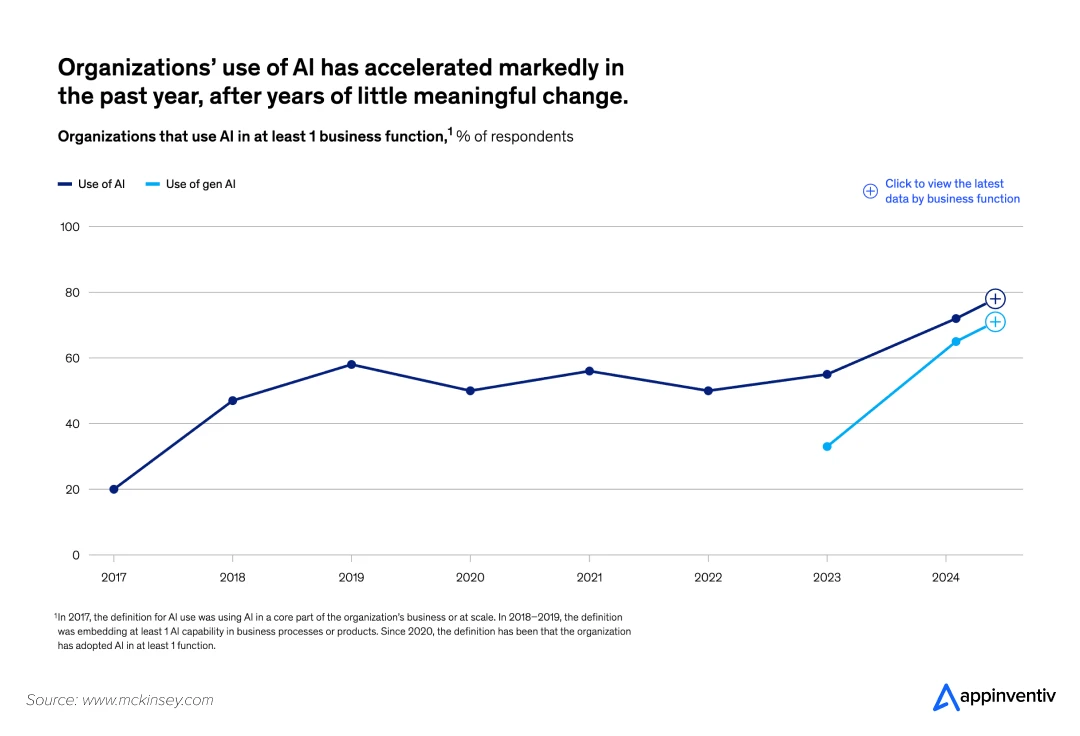
The impact of this AI adoption in business is already tangible. For instance, the World Trade Organization estimates that AI could boost global trade value by 34–37 % by 2040, transforming manufacturing, logistics, compliance and services.
In short, the prevalence of AI era is no longer a distant dream; it’s here. What does it mean? Well, it simply means for businesses in the current corporate scenario, the question isn’t if you should adopt AI, but how soon you can catch on to the AI trends.
In this blog, we’ll explore the top artificial intelligence trends, uncover the latest market statistics, and reveal their dominating impact across industries.
With 78% of global businesses already using AI in at least one function, the question isn’t if you should start, but how fast you can scale.
AI Market Statistics and Adoption Trend in Businesses
AI’s rapid evolution and potential to shape the future are quickly revolutionizing various industries across the globe. According to a survey published on Forbes Advisor, the most common AI use cases in businesses include customer service(56%), cybersecurity and fraud management (51%), digital personal assistants (47%), customer relationship management (46%), inventory management(40%), and content production (35%).

With its multiple use cases across industries, AI technology trends drive innovation, efficiency, and automation.
Let’s witness the power of the AI revolution with some intriguing and enlightening AI statistics that showcase the immense impact of AI technology on businesses, the economy, and daily lives.
- 97% of business owners believe ChatGPT for enterprises will positively impact their operations, with significant applications in multilingual content creation and website content development.
- 60%+ of business owners see AI as a tool to enhance customer relationships.
- 60%+ of CTOs recognize AI’s potential to boost productivity.
Emerging AI Trends Shaping the Today & Tomorrow of the Modern Business World
As AI does not seem to stop its growing prevalence in near future, several key trends are emerging to reinforce AI’s capabilities and redefine business goals. Thus, for businesses in 2025 and beyond, it becomes imperative to stay abreast of the latest and emerging AI and machine learning trends to gain a competitive edge. With that said, let’s discuss each of the important AI trends in detail below:
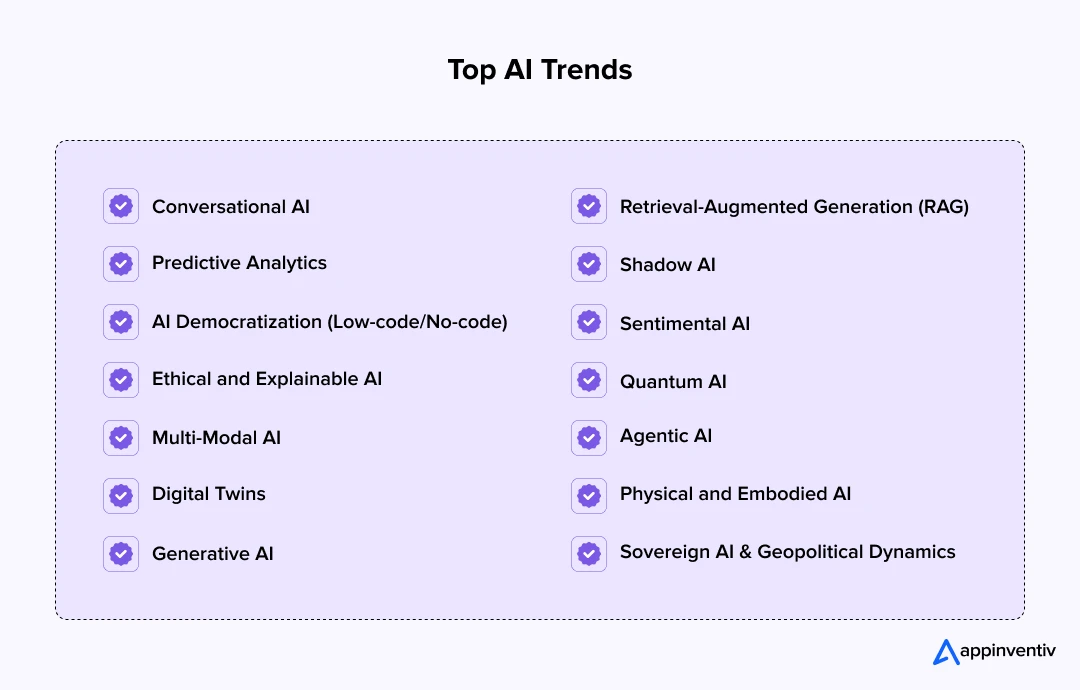
Conversational AI
Conversational AI applications have significantly evolved from basic chatbots to sophisticated, context-aware assistants that not only help automate more complex, repetitive, and rule-based tasks but also understand intent, tone, and emotion. This helps enhance customer experience and improve productivity.
For instance, retail giant Amazon is enhancing its AI capabilities with models like Nova Sonic, which is designed for real-time speech processing and more natural conversational interactions.
As per a report by Grand View Research, the size of the conversational AI market worldwide, estimated at $11.58 billion in 2024, is poised to reach $41.39 billion by 2030.

Predictive Analytics
When it comes to walking with shoulders to shoulders, the top artificial intelligence trends, businesses often rely on predictive analytics. Why? Because this AI technology trend helps make informed decisions, optimize inventory, improve delivery times, reduce operational costs, and ultimately increase sales and revenues.
For instance, using predictive analytics in the manufacturing industry, users can better predict unexpected machine failures and prevent costly breakdowns.
AI Democratization (Low-code/No-code)
The AI trend of low-code & no-code in app development allows businesses to customize intelligent systems via drag-and-drop methods and pre-built templates. By using these trends in artificial intelligence, organizations can automate repetitive and rule-based tasks.
As per a Data and AI Trends Report 2024 by Google Cloud, 2/3rd of decision-makers anticipate a widespread democratization of access to insights in the coming years and beyond. Also, this AI app trend allows businesses to program AI tools, like Sway AI, for data analysis of current and future processes.
Ethical and Explainable AI
As AI systems are increasingly widening its wings in decision-making, the demand for transparency and accountability is increasing. However, the decisions made by current AI models are not very well understood by AI researchers and programmers. This black box rule leaves them vulnerable to rampant discrimination and misuse.

Currently, there is a significant push to address the issue of the AI “Black Box” problem, where AI decisions are often opaque and difficult to understand.
This is the reason that Explainable AI (XAI) principles are gaining immense prominence, with organizations recognizing its features in building trust and ensuring compliance. This enhances accountability and ensures that AI models are not only accurate but also understandable and not biased.

Multi-Modal AI
Multi-modal AI is one of the most popular artificial intelligence trends in business. It leverages machine learning trained across multiple modalities, including speech, images, video, audio, text, and traditional numerical datasets. This approach creates a more holistic and human-like cognitive experience.
Enterprises can capitalize on multi-modal AI to build intelligent systems that analyze diverse data streams, improving natural language understanding, visual perception, and voice recognition for enhanced user experiences.
For instance, Google DeepMind is in the news with Gato, a multi-modal AI system that performs language, visual, and robotic movement tasks.

Also, Meta has recently introduced five significant new AI models and research initiatives. These include multi-modal systems capable of processing both text and images, advanced language models, music generation technology, AI speech detection, and initiatives to enhance diversity in AI systems.
Digital Twins
Digital Twins have gained immense popularity in recent years, particularly in the context of Industry 4.0 and IoT. Businesses using digital twins can monitor, analyze, and optimize performance in real-time by creating virtual replicas of physical assets, processes, or systems.

Digital twins is a disruptive AI trend for enterprises working on expanding into ESG modeling, drug design, smart cities, and other applications.
For instance, NVIDIA, a leading GPU manufacturer, uses digital twin technology and has partnered with Siemens to create an industrial metaverse.
Collaboration of Humans and Robots (CoBots)
In the ever-evolving landscape of technology, Collaborative Robots (Cobots) have emerged as a transformative innovation with no signs of decline in the near future. With millions of robots already deployed in factories worldwide, CoBot applications are here to stay forever. These applications are working alongside human workers to enhance productivity, safety, and efficiency across industries.
AI-powered cobots exemplify the harmonious synergy between human intelligence and robotic precision, taking over intricate and rule-based tasks in manufacturing while enabling human workers for higher-positioned jobs in design, programming, and maintenance.
Also Read: AI Model Collapse Prevention: Analyzing the Best Practices
Generative AI
Generative AI, a subfield of machine learning, allows businesses to create algorithms and tools to generate new data, content, and 3D/2D pictures using an existing data set. This branch of artificial intelligence banks on deep learning’s capabilities to understand patterns out of programming languages, audio, video, images, text, or other data types.
For instance, Generative AI trends in healthcare can help by rendering prosthetic limbs, organic molecules, and different things from scratch when activated through 3D printing, CRISPR, and other potential advances. It can enable early diagnosis of possible malignancy to design a more effective treatment plan. For example, on account of diabetic retinopathy, generative AI offers a pattern-based theory and creates content that can help doctors make informed decisions.
Here are the two most popular examples of generative AI trends introduced by OpenAI.
- DALL-E: DALL-E, a popular AI tool, allows users to create realistic images from a description in natural language. Using this powerful AI tool, users can generate a new image from an existing one, design physical products, delete parts of an image, add more to an original photo, and do a lot more.

- ChatGPT: Launched in November 2022, ChatGPT is one of the most popular AI language models that helps users generate human-like content based on the received prompts. Its use cases are quite broad and transformative.
To understand this AI language model deeply, read – How ChatGPT for Enterprise Can Improve Business Operations.
Shadow AI
One of the most advanced AI trends is “shadow AI”. But what exactly is Shadow AI? Well, it is the use of AI tools and applications created without the IT department’s awareness or supervision. Shadow AI is growing in popularity as companies look for ways to be more innovative and agile.

This presents both chances for quick development and problems related to security and compliance. Companies need to weigh the advantages of these unapproved developments against the risks of data breaches and their lack of system integration.
Effective AI governance and monitoring are crucial to utilizing shadow AI while fully reducing related dangers. Businesses with good shadow AI management will be more agile and responsive than their competitors.
Retrieval-Augmented Generation (RAG)
A key AI trend is the emergence of retrieval-augmented generation. RAG is one of the latest AI trends that boosts AI’s capabilities by enabling models to access external data during processing. This combines the power of traditional search engines with generative models, allowing for more accurate and relevant responses.

RAG trend is particularly valuable in industries like healthcare, legal services, and customer support that require fast, precise information. By incorporating RAG, businesses can utilize comprehensive data sources to deliver richer and more nuanced insights and responses.
Also Read: RAG vs Fine Tuning: Which AI Approach is Best for Your Business?
Sentimental AI
Sentimental AI in business, one of the most advanced AI and machine learning trends, involves systems that can analyze and interpret human emotions from text, speech, and visual inputs.
This global AI adoption trend for SMEs is vital for customer service, marketing, and mental health applications, as it enables more empathetic and personalized interactions. For instance:
- For customer service, businesses can tailor their responses and services to meet individual needs better, enhancing satisfaction and loyalty.
- In marketing, sentimental AI aids in creating emotionally resonant campaigns that boost engagement and conversion.
- Sentimental AI in mental health offers valuable insights for diagnosing and treating emotional and psychological conditions. This leads to more effective and timely interventions.
Quantum AI
Quantum AI is one of the top AI trends, which improves AI algorithms by utilizing quantum computing ideas. This method could pave the way for new developments in areas like complex system optimization, material science, and data encryption by solving complicated problems far more quickly than traditional computers.
This AI trend can greatly enhance machine learning models by handling large datasets more effectively and carrying out computations that are currently impractical. The tremendous processing capacity and accuracy that this technological synergy promises to bring about will have the ability to change industries. As it develops, quantum AI will spur innovation and advances in fields previously restricted by traditional processing power.
For instance, according to news by AOL, Zapata and D-Wave have partnered to advance the integration of quantum AI. This collaboration aims to accelerate the development and deployment of integrated quantum and generative AI solutions on D-Wave’s Leap cloud platform.
Agentic AI
Agentic AI is that powerful AI technology trend that takes artificial intelligence to the next level. Instead of just following pre-set rules, systems made on agentic AI trends learn from patterns, adjust on the go, and act with minimal human input.
For companies, that could mean customer service that runs itself, supply chains that fix problems before they escalate, and analytics tools that don’t just report data but act on it.
It’s exciting, but it also raises tough questions. How do you ensure an AI system acts ethically? Who’s accountable if it makes a bad call? As autonomy grows, governance will matter as much as innovation.
Also Read: 20+ AI Agent Business Ideas in 2025 & Beyond

Physical and Embodied AI
Now imagine AI not just in code, but in motion. Robots, drones, and self-driving machines that can move, sense, and interact with the world around them, that’s physical or embodied AI.
We’re already seeing examples of physical AI. Robots assisting surgeons in operating rooms. Drones inspecting power lines. Automated machines running factory floors with precision that humans can’t match for long hours.
It’s a leap forward in productivity and safety. While the benefits of physical AI are clear, it’s not without trade-offs. As more physical jobs get automated, we’ll need to think harder about how to upskill workers, protect privacy, and build public trust in machines that share our spaces.
Sovereign AI and Geopolitical Dynamics
Sovereign AI is a newer idea. It is about countries developing and controlling their own AI systems. The goal is to keep data, models, and infrastructure within national borders, largely for security and self-reliance.
The European Union’s proposed AI Act is one step in that direction. The US and China are pouring billions into homegrown AI programs to secure an edge. Every nation wants to lead, but this growing divide brings its own risks.
If each country builds in isolation, global collaboration could slow down. The future of AI will depend on how well we balance sovereignty with openness, protecting local interests without cutting off the innovation that thrives on shared knowledge.
Responsible AI
Responsible AI focuses on ensuring that AI systems are developed and deployed in ways that are ethical, transparent, and aligned with societal values. The principles of responsible AI emphasize accountability, fairness, and the reduction of bias in AI models.
As the integration of AI continues to increase in our day to day lives, organizations must prioritize the use of responsible AI to build trust with users. This approach helps mitigate risks of discrimination and comply with regulatory frameworks, ensuring that AI benefits everyone while minimizing potential harm.
AI Governance
AI governance has become a top priority for businesses to ensure the thriving future of their AI models. The AI governance trend ensures that organizations not only comply with regulations but also establish robust oversight structures for AI systems. It includes setting up clear policies for data usage, model transparency, accountability, and auditing AI decisions to mitigate risks such as bias, discrimination, or unintended consequences.
Effective AI governance also involves continuous monitoring of AI performance. This includes creating mechanisms for correcting errors or issues, and ensuring that AI systems align with the organization’s values and ethical standards. This helps maintain stakeholder trust and regulatory compliance.
These are some of the most popular AI and machine learning trends that are redefining the future of businesses in 2026 and beyond. Interested in elevating your AI journey with these AI trends but not sure how to get started? Worry not, our detailed blog on How to Build an Intelligent AI Model is for you.
Power of AI Industry Trends When Combined with Other Emerging Technologies
The best way to leverage top AI business trends is to combine them with emerging technologies and implement the most relevant one in your business. This next-gen AI marketing trend will help you realize the power of intelligent automation and unlock a door of massive possibilities. Let’s throw a little light on emerging technologies used with artificial intelligence.

AI + Internet of Things (IoT)
There is a whole world out there where the integration of AI in IoT connects every device with each other to enable them to perform multitude of functions. Thus, integration is beneficial to both real-time and post-event processing.
In the former, AI identifies patterns in data sets and performs predictive analytics. In the latter, it provides rapid responses to conditions and gathers insights from decision-making processes related to those events. AI and IoT, together, are unstoppable, propelling businesses to greater heights.
AI + Blockchain
Blockchain is another tech trend that has created momentum in all industries. Now, AI with Blockchain is simply the best of both worlds. This dual technological power helps enterprises reap the rewards of better transactions, high-quality data, decentralized intelligence, lower market entry barriers, greater transparency, and improved trust.
AI + Augmented Reality
Artificial intelligence and augmented reality in businesses are two powerful technologies that have redefined how we interact with the world. When combined, they can create more interactive and immersive experiences that nearly blur the line between the physical and virtual worlds.
With AI and AR, businesses can detect vertical and horizontal planes, estimate and analyze depth, segment images for realistic occlusion, and even infer 3D positions of things in real-time.
AI + Edge Computing
Edge computing for enterprises is yet another AI trend that moves computational power away from centralized cloud servers and toward the “edge” of the network or the data source. Edge computing with the power of AI, allows for quick data processing and decision-making in IoT contexts and real-time applications.
AI algorithms can evaluate data more quickly by processing it locally at the edge rather than sending it back and forth to data centers, which lowers latency and speeds up reaction times.
This cooperation is essential for applications that require instantaneous responses or in situations where continuous communication to centralized servers may be problematic or unfeasible.
Also Read: Unlocking the Power of Mobile Edge Computing
AI + 5G
The fifth generation of mobile network technology, or 5G, offers far faster speeds and reduced latency than its predecessors. When AI is integrated with 5G networks, it exploits these capabilities to process data faster and facilitate more responsive communication.
This merger is crucial for advanced applications like AI driven self driving cars and smart cities, where real-time data processing and prompt decision-making are imperative.
For example, AI-driven systems in smart cities can instantly evaluate enormous volumes of data from cameras and sensors positioned all around the city. Similar to this, AI algorithms in autonomous cars use 5G connectivity to acquire and analyze data from nearby cars and infrastructure quickly.
Also Read: AI Development Cost: 2025 Breakdown & Business Guide
Enterprise AI Trends and Their Applications in Different Sectors
New AI industry trends are revolutionizing businesses, helping them embrace intelligent automation, achieve efficiency, drive innovation, and reach greater heights. Let’s explore the most impactful use cases of AI in the world’s prominent sectors.

AI in Healthcare
AI is transforming healthcare at an unprecedented speed. The technology helps improve diagnostics and patient care. Here’s how AI in healthcare is being utilized to enhance efficiency and outcomes:
- Diagnosis and Treatment: AI helps diagnose medical conditions through image analysis (MRI, X-rays) and recommends personalized treatment plans.
- Drug Discovery: AI helps in drug development by predicting molecular interactions and identifying potential drug candidates.
- Remote Monitoring: AI-powered wearables help medical professionals monitor patients’ health in real-time and take instant action when detecting any anomalies.
- Healthcare Biometrics: With AI’s neural networks, AI in healthcare enables retinal scans, examines and records skin color changes, unlocks new diagnostic methods, and anticipates unknown risk factors.
Appinventiv has successfully integrated AI into healthcare with YouCOMM, an in-hospital communication system. The YouCOMM app we developed allows patients to interact with nurses in real-time via voice commands and manual alternatives like head movements.

This system has improved patient-staff communication efficiency and record-keeping, leading to adoption by over five US hospital chains and a 60% increase in nurses’ real-time response rates.
AI in Gaming
Artificial Intelligence is revolutionizing the gaming industry by enhancing player experiences and creating more interactive environments. Here are some of the key ways AI in gaming is making its mark:
- Improved Visualization Technology: With the help of deep learning and incessantly growing data, AI can improve video games’ visual quality, giving gamers a more realistic and immersive experience.
- Real-world experience with Voice Assistants: AI voice assistants help players access certain game features easily without always accessing the game menu.
- Personalized Play for Each Gamer: The AI future trends have a lot of possibilities in the gaming world, enabling developers to make game worlds more individualized and reactive to individual players in-game.
Related Article: AI in Sports – How is artificial intelligence redefining the sports industry?
AI in Retail/ eCommerce
AI in the retail sector is optimizing operations from inventory management to customer personalization. Here are several impactful ways AI is being integrated into the retail and eCommerce ecosystem:
- Inventory Management: AI for inventory management helps foresee demand, optimize stock levels, and reduce wastage.
- Visual Search: AI enables customers to search for products using images, which leads to enhancing their online shopping experience. There are numerous SaaS agencies that deliver search technologies to third-party retailers to boost their customer engagement.
- Checkout-Free: The adoption of this autonomous checkout system in retail helps customers shop without checking out or scanning the products. This cashierless checkout system uses smart shopping carts, QR codes, RFID tags, and machine vision to detect shoppers’ choices of products and bill them at the end of their shopping trip. Standard Cognition and AmazonGo are the first players of the check-out free AI in ecommerce systems.
- Personalized Marketing: AI analyzes consumer behavior and provides personalized product recommendations. This enhances customer engagement, improves ROI, and increases retention rates.
At Appinventiv, we effectively supported Edamama, an eCommerce platform, in integrating customized AI-driven recommendations. By delivering personalized advice to mothers according to their child’s gender and age, Edamama achieved significant success, securing $20 million in funding.
With more than 100,000 expectant and new mothers benefiting from the application, it demonstrates the profound influence of our partnership in developing a pioneering solution for the parenting community.

AI in Transportation
AI technologies are making transportation safer and more efficient. From autonomous vehicles to traffic management, here are the advances AI is bringing to the transportation sector:
- Autonomous Vehicles: AI enables us to realize the vision of autonomous or self-driving cars zooming around on the road to navigate safely, enhancing road safety and reducing congestion.
- Traffic Management: AI optimizes traffic flow by analyzing data from various sources and transforming traffic sensors into “intelligent” agents using cameras, easing urban mobility.
- Smart Tracks: Smart Tracks is an initiative started by China that doesn’t require any track as the train follows the virtual track made by painted dashed lines. This disruptive AI trend is predicted to grow globally in the coming years.
- Digital Number Plates: Recent trends in artificial intelligence interestingly enable smart technology to transform transport number plates into digital number plates, helping transport authorities to get instant notification in case of accidents and use GPS for location detection.
AI in Manufacturing
The manufacturing industry is embracing AI to boost productivity and ensure higher quality standards. Below are some of the key applications of AI in manufacturing processes:
- Predictive Maintenance: AI technologies analyze sensor data to help manufacturers predict equipment failures and reduce downtime and maintenance costs.
- Supply Chain Optimization: The top AI trends in manufacturing help optimize logistics routes, minimize delays, and improve efficiency.
- Industry 5.0: Industry 5.O in manufacturing is a new paradigm that involves AI algorithms. It signifies a holistic and data-driven approach to ensuring product quality, process efficiency, and customer satisfaction.
- Computer Vision: Computer Vision is a decade-old application of artificial intelligence that is still transforming the manufacturing sector with its remarkable features like object detection, real-time analysis, and facial recognition.
AI in Finance
AI is reshaping the finance industry by enhancing decision-making and increasing security. Here are some major AI applications that are transforming financial services:
- Credit Risk Assessment: AI in finance helps keep records of customer data and utilize it to pay off loans and credit cards they already possess.
- Fraud Detection: AI in finance uses machine learning algorithms to recognize unusual patterns and behaviors in real-time and prevent fraudulent transactions.
- Safe Trading: AI analyzes market data, enabling organizations and individuals to execute trades swiftly, optimize investment strategies, and minimize unanticipated risks when buying or selling stock and shares.
- Auto Claims Processing: To combat fraud cases and ensure the genuineness of the situation where insurance companies have to pay the customer for their insurance, businesses use AI to compute a vehicle owner’s “risk score,” examine accident imagery, and monitor driver behavior.

AI in Agriculture
AI is significantly advancing the agriculture sector. How? The technology helps streamline a number of farming procedures. Here are some of the major applications of AI in different facets of agriculture.
- Precision Farming: With the aid of AI, farmers can monitor crop health, soil conditions, and weather patterns to make more educated decisions that will increase production and conserve resources.
- Automated Machinery: AI-powered harvesters and tractors carry out operations more precisely and effectively while using less labor.
- Soil Management: AI examines soil data to make accurate fertilization and irrigation recommendations that improve crop productivity and soil health.
- Pest and Disease Management: AI-driven systems minimize crop damage and cut down on the need for pesticides by identifying and addressing pests and illnesses early on.
AI in Education
AI is revolutionizing the education industry by transforming the learning and teaching experience for both students and educators:
- Personalized Learning: AI tailors educational content to match individual learning styles and paces, thereby enhancing student outcomes.
- Streamlined Administration: AI automates tasks like grading and scheduling, allowing educators to dedicate more time to teaching.
- Enhanced Tutoring and Support: AI-powered tutoring provides additional assistance to students beyond regular class hours, addressing learning gaps effectively.
- Advanced Assessment Tools: AI-driven assessment platforms offer in-depth insights into student performance, facilitating targeted interventions and personalized learning strategies.
AI in Entertainment
The adoption of AI in the entertainment industry is changing the creation and distribution of content in the entertainment sector, revolutionizing how audiences engage with media.
- Content Creation: AI systems produce visual art, audio, and scripts, giving makers and artists new creative tools.
- Audience Analysis: Content creators can tailor their services to the needs of their target audience by using AI to evaluate viewer preferences and behaviors.
- Personalized Content Delivery: AI makes recommendations for material that are tailored to each user’s viewing tastes and behaviors, which increases user satisfaction and engagement.
- Real-time Adaptation: AI’s real-time audience reaction monitoring enables dynamic content distribution and storytelling modifications that optimize viewer retention and satisfaction.
AI in Construction
AI in construction is advancing the industry by improving project efficiency, safety, and quality through automated scheduling, real-time monitoring of construction sites using AI-powered sensors, and precision in materials management and logistics.
- Project Planning: AI aids in scheduling projects, allocating resources, optimizing timelines, and cutting costs.
- Predictive Maintenance: AI anticipates equipment failures and maintenance requirements, reducing downtime and extending machinery lifespan.
- Safety Surveillance: AI-driven cameras and sensors oversee construction sites for safety risks, ensuring adherence to safety protocols and preventing accidents.
- Quality Assurance: AI systems scrutinize construction quality, detecting defects and irregularities to maintain high standards and minimize rework.
AI in Cybersecurity
AI-based cybersecurity helps detect vulnerabilities and prevent cyber criminals from executing their malicious hacking attempts. Organizations that fail to implement AI in businesses are more vulnerable to cyberthreats and suffer a higher rate of data breaches.
Here are some powerful use cases of AI in cybersecurity:
- Facial Recognition: Facial recognition, a dominant form of biometric authentication, helps identify and remove rogue elements from the system. This is why businesses are rapidly integrating this feature into their application to prevent unauthorized access and create a safer working environment.

- Cyber Threat Hunting: Cyber threat hunting is a proactive approach combined with high-security functions to detect cyber threats lurking undetected in a network proactively. By leveraging manual and automated techniques of AI, cyber threat hunting can identify and respond to cyber threats early, reducing the risk of cyber-attacks and maintaining the security of the systems.
- Surveillance: AI enables organizations to have 24/7 surveillance support on their infrastructure. A prominent use case of AI-powered surveillance can be seen in the Japanese machine learning algorithm, AI Guardman, which detects suspicious behavior of shoppers and alerts the store owner instantly, even in crowded places.
From strategy to execution, Appinventiv is here to guide you every step of the way in building AI-driven solutions tailored to your specific industry needs
What Are the Future Trends in Artificial Intelligence?
In the coming years, the prominence of AI trends does not seem to slow down. Rather, it is poised to expand its wings in more aspects of business. The validation of this fact is well observed in the Statista report, which predicts that the global AI market, valued at $254.50 billion in 2025, will reach $1.68 trillion by 2031. But what factors will fuel this rapid adoption and market growth in the coming years? Well, here is what the future holds:
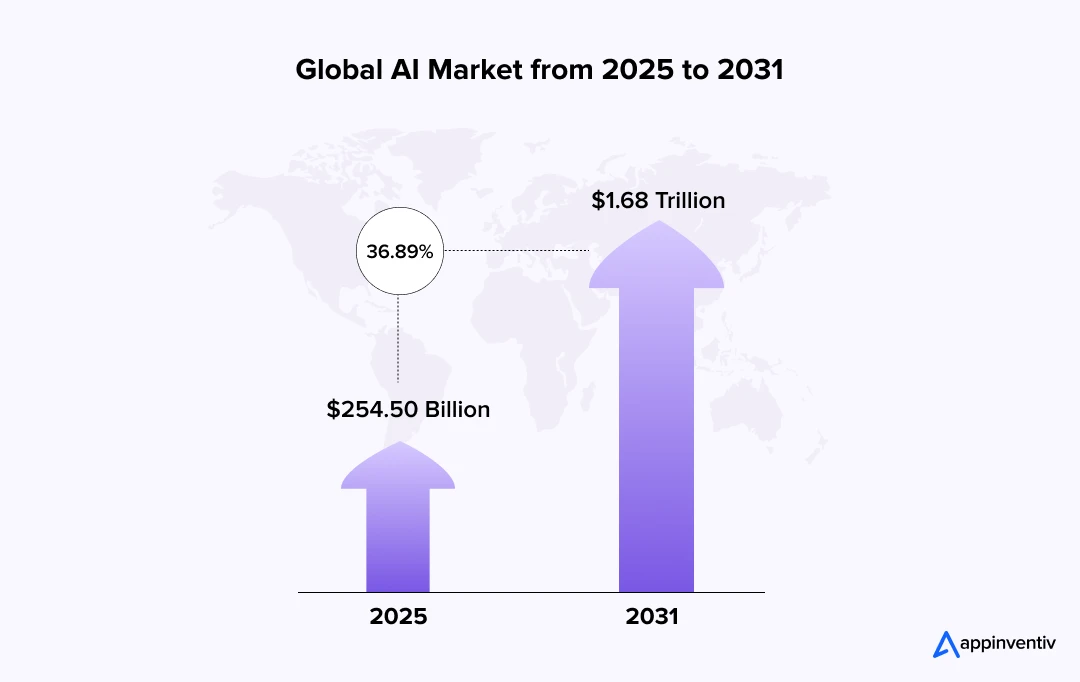
1. AI Becomes Ubiquitous and Integrated
AI is transitioning from a specialized tool to an integral part of everyday life. From AI-powered agents simplifying tasks at home and work to AI-driven systems addressing global challenges like climate change and healthcare access, the technology is becoming deeply embedded in our daily routines.
2. Surge in AI Investment Trends
Global enterprises are rapidly increasing their investment in developing custom models. According to IDC, spending on AI is expected to double from $307 billion in 2025, to $632 billion by 2028.
3. Advancements in AI Reasoning
The development of AI reasoning capabilities is enhancing decision-making processes. Companies are investing in custom silicon and AI reasoning models to meet the growing demand for advanced AI applications.
5. Focus on AI Safety and Ethics
As AI systems become more powerful, ensuring their safety and ethical use is paramount. The International AI Safety Report highlights risks such as privacy violations and the potential for AI misuse, underscoring the need for robust governance frameworks.
Keep Pace with the Latest AI Trends with Appinventiv
As the latest trends in AI continue to evolve and transform industries, businesses need to be proactive, not reactive. At Appinventiv, we believe in keeping pace with the top AI trends by offering custom AI development services. With our 10+ years of industry experience and in-depth expertise in AI technologies, we empower businesses to unlock the full potential of AI and propel their business forward.
MyExec, Vyrb, Mudra, JobGet, Flynas, are some of our esteemed clients who believed in our expertise and witnessed impressive outcomes. For instance, by partnering with Appinventiv, our clients have achieved:
- 75% faster decision-making
- 98% AI prediction accuracy
- 40% average reduction in costs
- 10x faster time-to-market
Why Appinventiv? Here’s What Sets Us Apart:
- 300+ AI-powered solutions delivered across various industries.
- 200+ data scientists and AI experts
- 150+ custom AI models trained and deployed
- 75+ enterprise AI integrations completed
- 50+ bespoke Large Language Models (LLMs) fine-tuned
- 35+ industries mastered
Recognized Excellence:
- The Leader in AI Product Engineering & Digital Transformation by the Economic Times
- Ranked among APAC’s High-Growth Companies by Statista & FT
- 5+ strategic AI partnerships with global leaders that enhance our ability to deliver innovative solutions at scale.
Whether you are looking for just an AI consulting company or wishing to keep pace with the AI development trends for digital transformation, we are here to help.
We are ready to embed AI in your organization. Are you ready to lead the way in AI trends? Contact us today to see how Appinventiv’s AI services can drive your business forward.
Let’s Build the Future Together.
FAQs
Q. What are the current trends in AI?
A. The current trends in artificial intelligence are:
- Conversational AI
- Predictive Analytics
- AI Democratization (Low-code/No-code)
- Ethical and Explainable AI
- Multi-Modal AI
- Digital Twins
- Generative AI
- Retrieval-Augmented Generation (RAG)
- Shadow AI
- Sentimental AI
- Quantum AI
- Agentic AI
- Physical and Embodied AI
- Sovereign AI and Geopolitical Dynamics
Q. What are the major AI developments and announcements from today across the tech industry?
A. The AI landscape has seen exciting developments recently. This includes but is not limited to:
- Generative AI: Several tech giants have launched advanced generative AI platforms that help create everything from artwork to marketing copy, enhancing creativity across industries.
- Chatbots and Virtual Assistants: Companies are increasingly implementing AI-driven chatbots and virtual assistants to handle customer inquiries, improving response times and service quality.
- AI-Powered Cloud Services: Cloud providers are integrating AI into their platforms, offering businesses scalable AI tools for tasks like data analysis, machine learning model deployment, and more.
These developments and advancements are helping businesses to unlock new capabilities.
Q. What emerging trends in AI search should businesses prepare for?
A. AI search is evolving at a breakneck speed. Thus, businesses need to prepare for the following searches:
- Conversational AI: As search engines evolve, AI-powered chatbots and conversational interfaces are becoming the new norm. This offers more personalized, natural interactions for users.
- Context-Aware Search: Future search engines will be more attuned to user intent, providing more relevant and tailored results based on the context of the query.
- Visual and Voice Search: The integration of voice and image recognition in search tools is gaining momentum. This allows users to interact with search engines in more intuitive ways.
Q. What are the latest advancements in AI for analytics and data-driven decision making?
A. The latest advancements in data analytics and decision-making are:
- Real-Time Data Processing
- Predictive Analytics
- AI for Visual and Text Analysis
These advancements empower businesses to make data-driven decisions with greater accuracy and speed.
Q. How is ChatGPT and generative AI evolving for future industry applications?
A. ChatGPT and generative AI are continuously evolving for the industry applications in the key areas mentioned below:
- Customer Service
- Content Creation
- Education and Training
Q. How does Appinventiv leverage AI trends for business growth?
A. At Appinventiv, we integrate the top AI trends to drive business growth and deliver innovative solutions. We embed AI in the following areas, empowering businesses to stay competitive and unlock new opportunities for growth.
- AI-Powered App Development
- Data-Driven Insights
- Custom AI Software Development
- Legacy System Modernization with AI


- In just 2 mins you will get a response
- Your idea is 100% protected by our Non Disclosure Agreement.

Industry-Wise Use Cases and Benefits of Hyper-Personalization for Your Business
Key takeaways: Hyper-personalization in business uses AI, ML, and big data to tailor experiences, helping increase customer satisfaction and engagement. Businesses across industries are implementing hyper-personalization strategies and witnessing impressive outcomes in terms of customer loyalty and sales. The future of hyper-personalization lies in predictive analytics, generative AI, and the integration of omnichannel experiences. To…
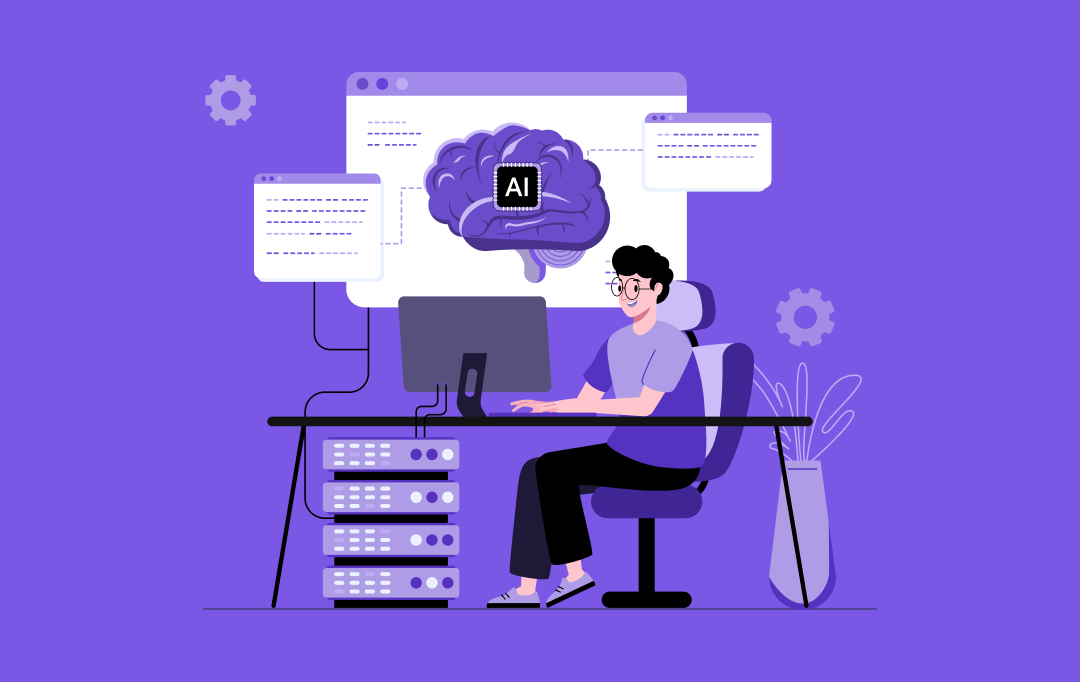
AI-Powered Software Development in the UK: Key Opportunities and Compliance Risks
Key takeaways: The UK's AI-driven economy is a powerhouse, contributing over £11.8 billion in GVA. For businesses, this means a massive, immediate opportunity for competitive advantage. The UK's "pro-innovation" stance on regulation is not a rigid, one-size-fits-all rulebook. This gives you flexibility, but it demands an agile strategy built on 5 core principles. AI-powered software…
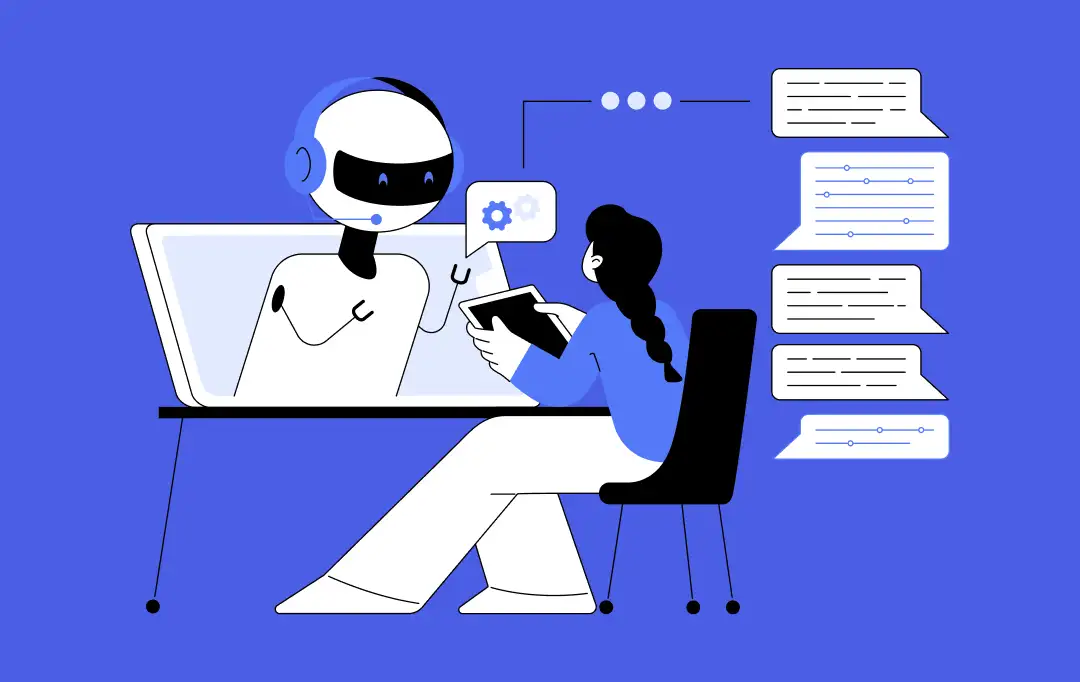
How AI Agent Interoperability Can Boost Efficiency and Reduce Costs
Key takeaways: AI agent interoperability bridges the communication gap between disconnected systems, turning isolated automation into a network of intelligent collaboration. McKinsey found that agentic AI delivers up to 40% faster decisions and 30% lower costs, proof that interoperability isn’t theory, it’s measurable impact. Enterprises gain more than efficiency; they gain agility. Interoperable agents share…
